|
A special exhibition, which took place
from between last month at the National Museum of Science
and Technology and the Nhow Hotel in Milan, celebrated
leading material supplier Alcantara, and their role in
supplying the automotive world with their famous cloth.
Although Alcantara is a global supplier, the exhibition
concentrated on the Made in Italy design theme, with fifteen
historical cars from Bertone, Giugiaro and Pininfarina on
display.
The incredible appeal of Alcantara stems
from a true technological breakthrough, an invention that
actually comes from Japan. It all started in 1970, when Dr.
Miyoshi Okamoto, a scientist working at the multinational
Japanese chemical corporation Toray, filed a patent for this
innovative material. To tap the full potential of this
extraordinary discovery, the Japanese company looked for a
European partner to help it tackle the market, and found one
in the ENI Group. Once an agreement had been signed for
commercial use of the patent, the material was launched
under the brand name Alcantara. Alcantara is based on a unique,
proprietary technology, which has yet to be rivalled, and
ensures that the product will preserve its one-of-a-kind,
state-of-the-art features over time. All phases of
processing, from spinning to dyeing, are carried out in the
200,000 square metres of Alcantara’s large Italian plant in
Nera Montoro, near Terni.
Giorgetto Giugaro, who has used Alcantara
on numerous concept cars including his latest Ferrari GG50,
explains, “Alcantara stands as a synonym for a quality
product, very versatile and reliable, very resistant and
easy to care. I have really worked a lot for the automotive
industry and I would say that now the offer is incredible:
fretwork, drawings, print effects, original treatment of
surfaces, all chromatic shades. A range rich in new ideas is
now provided, ideas that were lacking in the automotive
industry compared to what was already present in furniture
design, and we have decided to apply them to our new style
proposals. For this GG50 that I wanted to create to
celebrate my “first” 50 years of activity in car design, I
decided to use this innovative and pleasant material to make
inserts in a nice red colour matching and alternating with
leather.
“Balance, harmony, good taste, quality
and the care of detail, an accurate execution, the use of
precious and pleasant materials. These details visually
communicate the car interior’s comfort for people with
proportions playing on the final aesthetics. Automotive interiors
are unique and extremely important in the relationship
between people and their cars. Today it is really considered
as a miniature “home” by users who are increasingly
advanced, exacting and attentive to quality. Therefore the
care you usually have for your own home, the love for detail
and the search for distinctive features are now concentrated
on this “cell” that must be able to combine visual
pleasantness, solidity and soft surfaces while aiming at
well-being and maximum comfort.
|
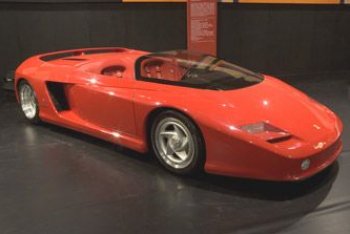
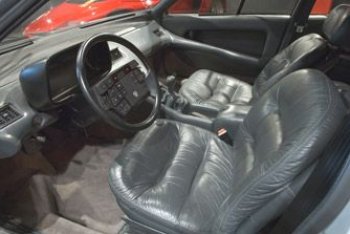
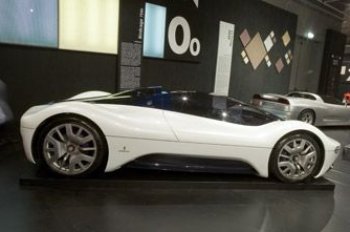 |
|
Although Alcantara is a global
supplier, the exhibition concentrated on the Made in
Italy design theme, with fifteen historical cars
from Bertone, Giugiaro and Pininfarina on display. |
|
|
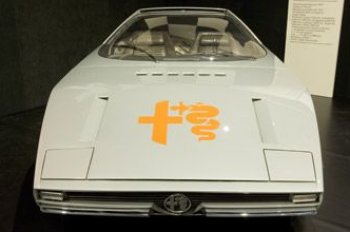
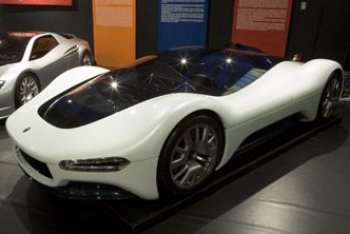
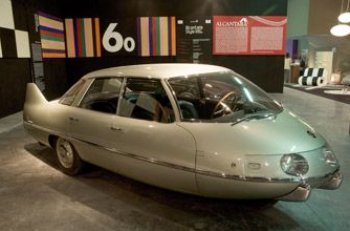 |
|
A special exhibition, which took
place from between April 4-13th at the National
Museum of Science and Technology and the Nhow Hotel
in Milan, celebrated leading material supplier
Alcantara, and their role in supplying the
automotive world with their famous cloth. |
|
|
“Cars are a world apart, taking inspiration from everything.
Everything gives signals and suggestions that are translated
into fashion, trends and new aesthetic theories. Art,
architecture, music, theatre and therefore fashion and
furniture, but also the evolution of lifestyles, the
attitudes and ways of behaving and being can provide an
incentive for designers and encourage them to “revisit”
their concept of car interiors and to “communicate”
innovation and quality from a visual point of view.
Alcantara is a very resistant, pleasant, new material, which
offers a wonderful tactile experience. As I said, this is a
material that can be combined with leather, creating
simultaneously amusing, original and refined associations.
Traditionally Italians can count on the best fashion
designers that set the trends and teach others. To be up to
the level of these great names that propose extremely
charming garments, we will “dress” car interiors seductively
so as to convey good taste, balance and refinement according
to the most advanced expression of Italian style.”
Of course, Alcantara is not only a
supplier to the automotive industry, with key markets in
furniture design, fashion design and other forms of
transportation such as luxury yachts. One of the most famous
examples of furniture to use Alcantara fabric is the Sacco
armchair by Zanotta, designed and developed in 1968 by Piero
Gatti, Cesare Paolini and Franco Teodoro. It was this design
which literally revolutionised armchair design, providing
many postures and introducing an element of fun.
The dream cars on display at the special
exhibition ranged from the 1960s through to the modern day,
representing the timeless quality of Alcantara material. In
chronological order, the 1960s cars, on display at the Nhow
Hotel, included the 1966 Maserati Ghibli by Giugiaro and the
1967 Bertone Marzal. The remaining exposition at the
National Museum of Science and Technology comprised of the
1971 Alfa Romeo Caimano by Giugiaro, the 1976 Rainbow by
Bertone, 1978 Jaguar XJ-Spider by Pininfarina, 1980 Lancia
Medusa by Giugiaro, 1988 Genesis by Bertone based on
Lamborghini running gear, 1989 Mythos by Pininfarina, 1991
BMW M12 Nazca by Giugiaro, 1997 Peugeot Nautilus by
Pininfarina, 1999 Bertone Bella based on the platform of the
Alfa Romeo 166, 2003 Bertone Birusa based off the BMW Z8,
2004 Toyota Allessandro Volta by Giugiaro and finally the
2005 Maserati Birdcage 75th by Pininfarina.
by James Granger
|
|
|
|
![]()
![]()